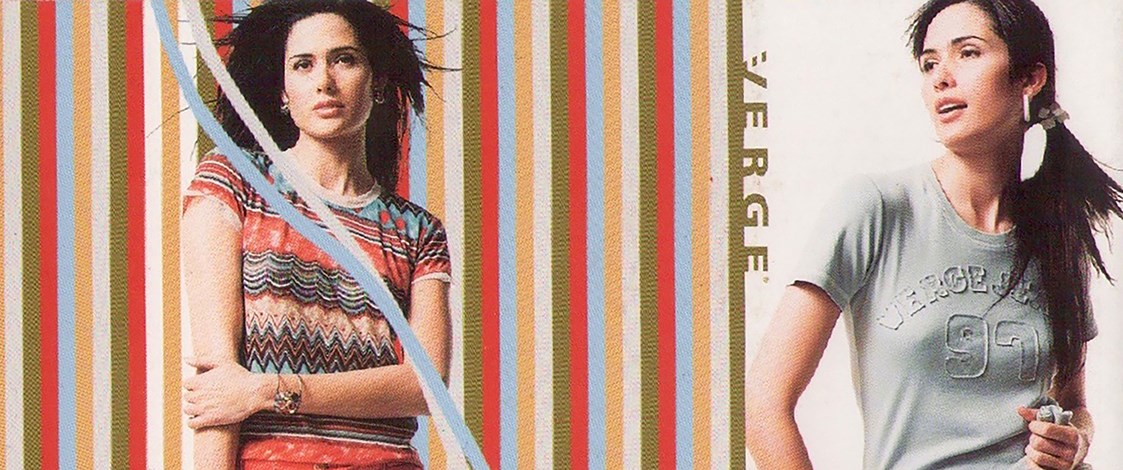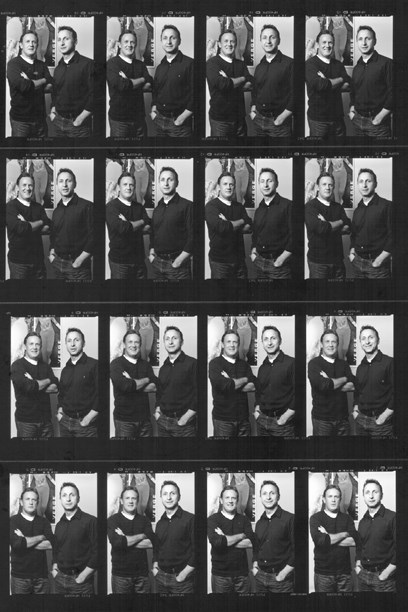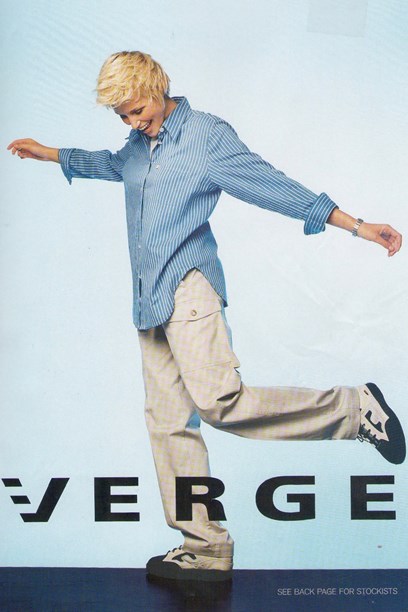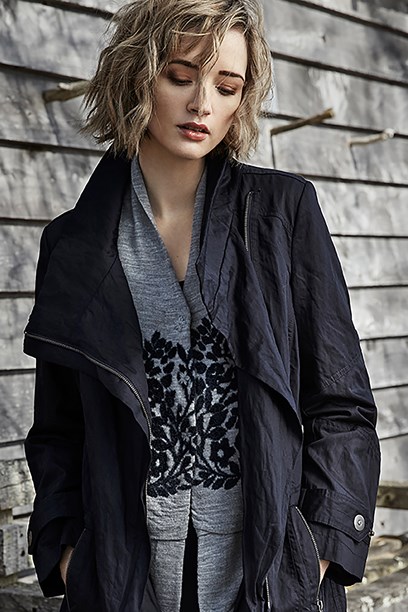Stories
Verge
1997-

It's the consummate 'phoenix rises from the ashes' tale. When Dress For Less's receivers offered the Hero label back to its founders Neil Brabant and Ian Webster in 1996, the pair declined. They weren't confident anyone - neither retailers nor consumers - would want the brand, arguably tarnished by its parent company's receivership.
The pair were too young to retire. Neil says, "It was a stressful time for both of us and we both thought that maybe we would go off and do different things, but that (creating and marketing a fashion brand) is what we knew. We thought, "Let's give it another crack...if we've done it once, we can do it again."

Verge founders Neil Brabant and Ian Webster.. Image © Verge.
Hence the birth of Verge in May 1997, designed to fill the gap that Hero had vacated. Ian tells, "There was a men's brand in New York called Verge; we thought the name was great and it was available in New Zealand and Australia. That was very important as we knew the future would be in Australia - Hero had really only scratched the surface there."
"We hadn't been out of the industry long enough for people to have replaced the Hero brand, and with the knowledge and experience we had picked up from our year with Dress for Less, Verge went from a standing start to equalling the Hero turnover, within two years."
Presenting their exit from Hero to the brand's retailers had been pretty difficult: not only had Neil and Ian sold Hero, but it was going to be opened up in competition to its former stockists. They had been very careful with the way they managed the closure of the wholesale division: "We allowed our retailers to return stock, we did whatever they wanted to make their job easier (just one retailer was so disappointed that she unpicked all the Hero labels off her garments). That held us in good stead and when we announced that we were launching Verge we were welcomed back with open arms."
The new label's design philosophy was a blueprint of Hero, albeit a more sophisticated model. "We were very conscious that to be relevant we needed to have a strong design team. We took on Angela Todd (formerly of Chlorofile) as designer."
"We were quite unusually positioned for a brand in any market: not only could we sell denim jeans, we could sell event dressing under the same brand name. We put together areas of the range the Verge woman could wear to a wedding, a cocktail party, to any event."

Verge ad, Summer 1998. Image © Verge.
Neil and Ian didn't want the brand to be linked to a person - they believed the 'name designer' market, positioned above where Verge sat, to be too limited.
When Angela Todd left Verge in 2002 to have children, Rose Key (ex Classic Fashions/Saga and Soulo/Angela Lewis) joined Verge. Brabant tells, "With Rose we made the slow but essential transition to manufacturing offshore. Australia were really putting the heat on, they said, "If you guys really want to crack it here your price points need to be better." Offshore manufacturing also gave Verge the ability to add detailed handwork to its garments.
Neil and Ian had long known their relationship with retailers was absolutely critical. "We worked really hard to make ourselves indispensable to the retailers on three levels: creating great product that we believed they could sell; supporting them in every way possible, and creating relationships with their sales team - and that was the magic formula to keep the brand strong in the marketplace," Ian says.
The Australian agents, Sharrock, had remained in distributor mode when Verge was launched. Neil and Ian say Sharrock's expertise was one of the reasons the brand grew so quickly in Australia - it took just two years for Verge to equal the Australian turnover Hero had reached in ten.
Verge contributed to seed funding of Fashion Industry New Zealand (FINZ) and Ian was one of the Trustees when the organisation was formed in 2002. The brand also had a lengthy association with New Zealand Fashion Week, showing for the event's first two years (2000 and 2001), and sponsoring the Verge Breakthrough and New Generation shows through till 2008. The initiatives saw them advising and supporting an impressive stable of brands including Adrian Hailwood, Lonely Hearts Club, Charmaine Reveley and Cybèle.

Verge, 2016. Image © Verge.
In January 2016 Neil and Ian sold Verge to existing managers Andrew Rae and Rehia Ihaka. "There were many reasons for deciding to sell, the most important one being we both felt it was time to inject new blood and ideas into the brand. We were confident that Andrew and Rehia had the skills, ability and enthusiasm to do this."
With Mary-Ellen Prendergast (of Shen and formerly High Society) heading up the design team, Andrew Rae reports Verge is being revitalised in term of both its product and marketing. The iconic brand is being lifted in increments to ensure it is relevant in both fashion and commercial terms for years to come.
Text by Julie Roulston.
Last published August 2016.